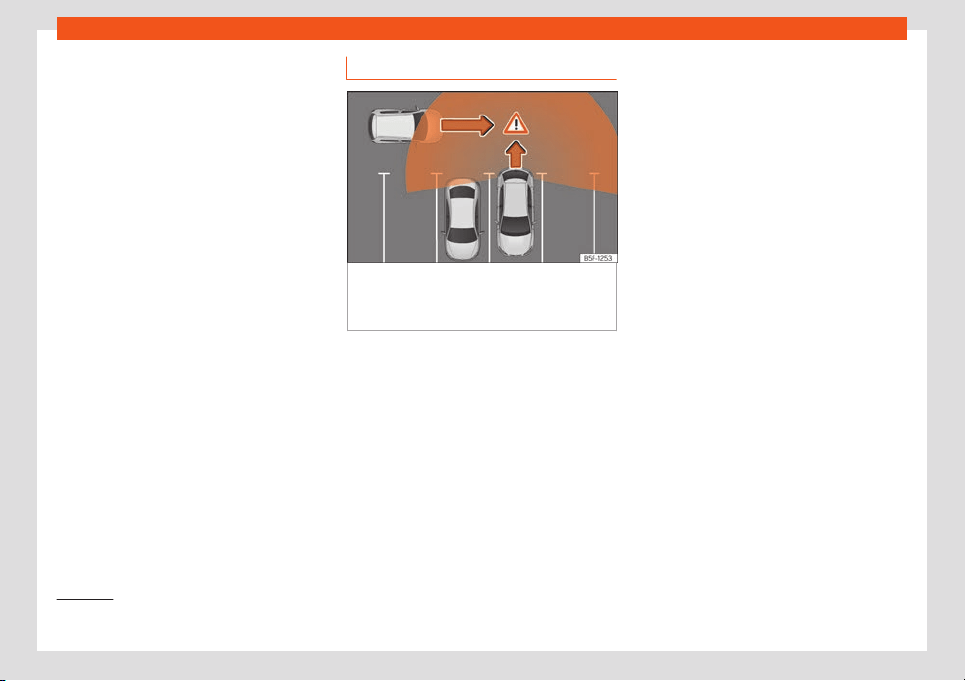Loading ...
Loading ...
Loading ...

Driving
The faster a vehicle approaches, the sooner
an indication will be displ
ayed in the exterior
mirror, because Side Assist takes into account
the different in speed compared to other ve-
hicles. Thus even though the distance from
the other vehicle is identical, the indication
will appear sooner in some cases and later in
others.
Physical limitations inherent to the system
In some situations the lane departure warning
may not interpret the traffic situation correct-
ly. I.e. in the following situations:
●
on tight bends;
●
in the case of lanes with different widths;
●
in areas with significant gradient changes;
●
in adverse weather conditions;
●
in the case of special constructions to the
side of the vehicle, e.g., high or irregular divid-
ers.
Rear cross traffic alert (RCTA)
Fig. 164
Schematic representation of the rear
cr
oss traffic alert assistant: zone monitored
around the vehicle while leaving a parking
space.
Park Assist uses the radar sensors on the rear
bumper
›
››
page 212 to monitor the traffic
crossing behind the vehicle as it backs out of
a parallel parking space or as it is being man-
oeuvred, for example in very low visibility con-
ditions.
When the system detects a relevant vehicle
on the road that is approaching the rear of
the vehicle
›››
Fig. 164, an acoustic alarm
may sound if the relevance so requires it.
In addition to the acoustic alarm, the driver is
also informed by means of a visual signal on
infotainment system display. This signal is dis-
played in the form of a red or yellow strip at
the back of the image of the vehicle on the in-
fotainment system screen. This strip displays
the side of the vehicle towards which traffic is
approaching in transverse direction
1)
.
Automatic braking to reduce damages
If the rear cross traffic alert detects that
someone else on the road is approaching the
rear of the vehicle and the driver does not
step on the brake, the system will engage the
brakes automatically.
The parking system helps the driver by auto-
matically engaging the brakes to reduce any
damage. The automatic intervention on the
brakes takes place when driving in reverse at
approx. 1-12 km/h (1-7 mph). After detecting
that the vehicle is stationary, the system
keeps it that way for around 2 seconds.
After automatically braking to reduce dam-
age, the system will not be able to automati-
cally brake again for approximately 10 sec-
onds.
You can interrupt the automatic braking by
stepping hard on the accelerator pedal or
the brake pedal in order to regain control of
the vehicle.
1)
It is only displayed if the vehicle is equipped
with a parking syst
em.
234
Loading ...
Loading ...
Loading ...